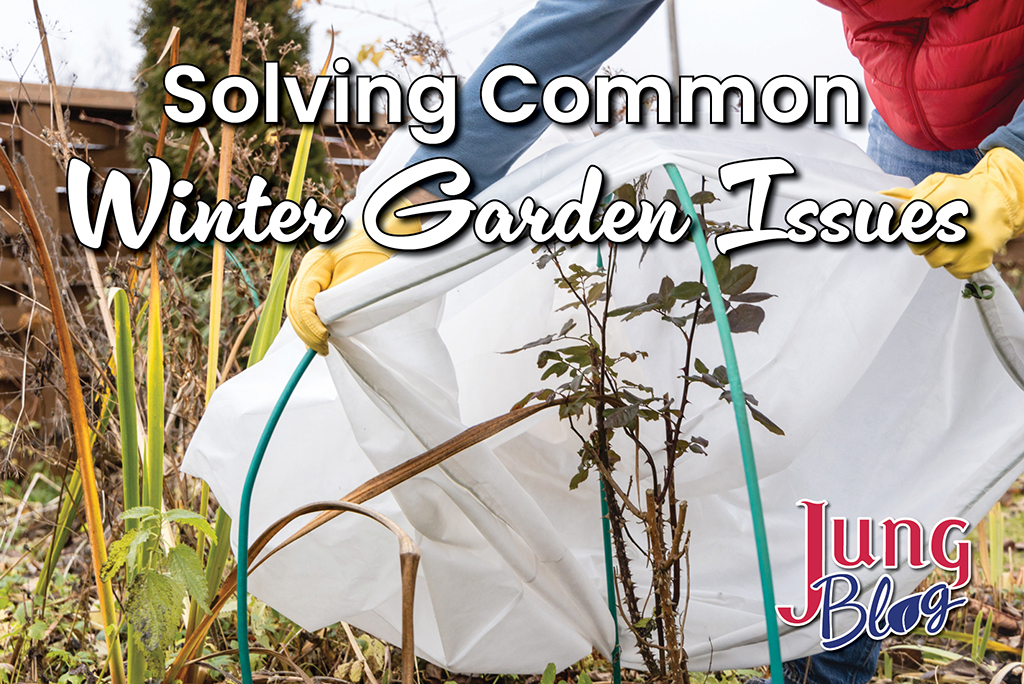
Do you look forward to winter? On the one hand, the quiet days and fresh snowfalls can be wonderful. However, those cold conditions create challenges for our gardens. Let’s check out some common problems and how to prevent them.
Winter Burn
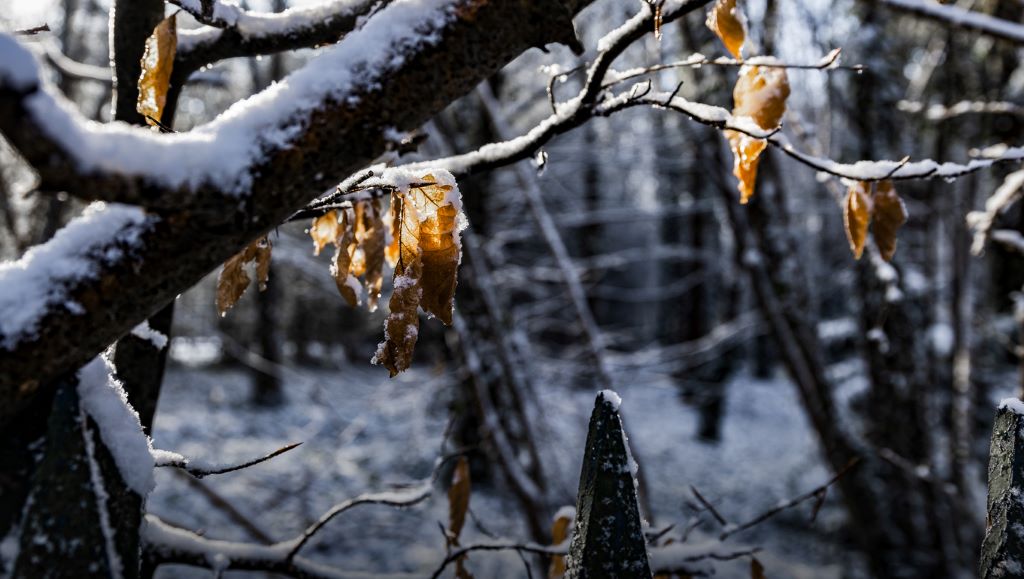
Have you ever noticed brown leaves on your evergreens in spring? This problem, known as winter burn, is caused by the leaves drying out. Winter burn mainly affects evergreens like boxwood, yew, and junipers. Several factors can impact the severity of winterburn, like a plant’s age. New transplants have smaller root systems that are prone to drying out. In areas with snowy winters, the plants’ upper leaves may be damaged if they aren’t covered in snow.
Preventing Winter Burn
Any evergreen can have winter burn, but it’s more likely on less hardy plants for your area. Another factor is location. For years, my garden had a boxwood with lots of southern exposure and sunlight in winter. And each spring, many of its branches were full of brown leaves. Had I planted the boxwood on the north or east side of the house, there would’ve been less winter burn. Here are tips for preventing winter burn.
- When you plant evergreens, place them in areas sheltered from winter winds and sunlight, like the north or northeast side of a building.
- If your plants are getting winter burn, a burlap fence makes a great barrier around them. For best protection, use four-to-five-foot stakes and cover the south and west sides of the tree.
- You can also wrap individual plants with burlap, but the burlap should be loose and open at the top. The wrapping method is most effective for new plantings or trees showing damage on all sides.
- Continue watering newly planted trees into late fall.
- Avoid pruning evergreens in late summer, which can encourage tender new growth.
- Plant evergreens at the right time. Spring and late summer/early fall are best, though you can plant evergreens in summer, too.
Winter Burn Damage
- Prune out damaged branches in mid-spring. Waiting allows you to see if any new buds emerge from damaged parts of the tree. If new buds don’t appear, prune back to live growth.
Sunscald
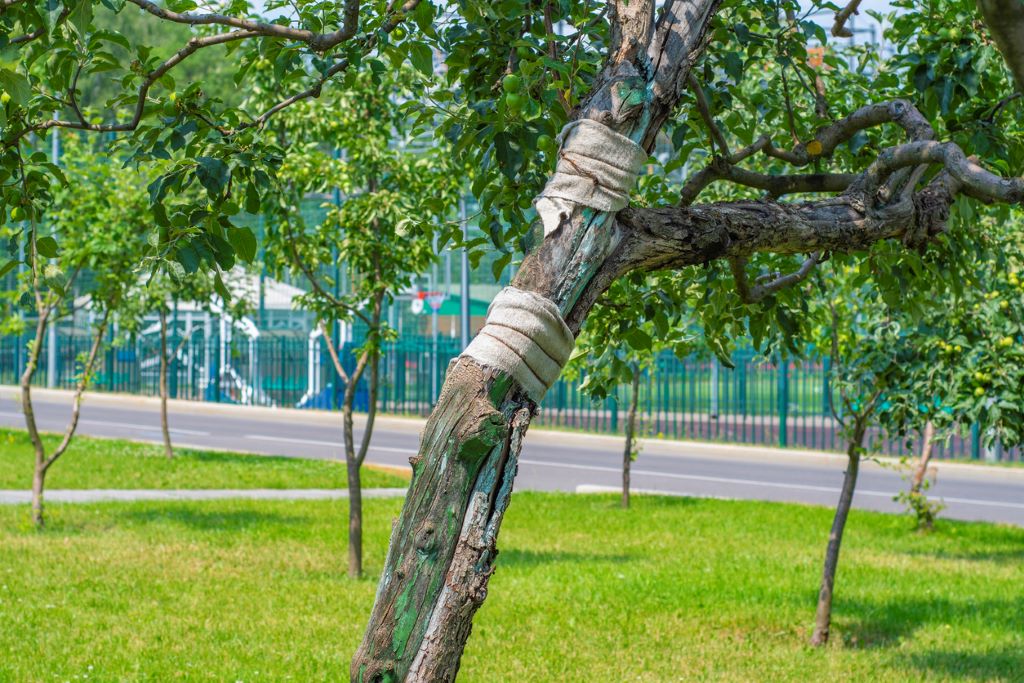
Years ago, my father planted lots of trees in our backyard. A few of those trees developed large cracks in the trunk, called sunscald. This common problem affects young trees with thin bark, like maple, crabapple, and honey locust. Sunscald happens when the bark warms up on a sunny winter day. As clouds arrive or the temperatures drop, the bark becomes colder, causing the living tissue to die while leaving a crack in the trunk. The damage looks bad, but most trees will heal themselves, though it can take years and leave the tree more prone to disease problems. As the trees age, their bark grows thicker and less prone to sunscald.
Preventing Sunscald
- In the fall, add a plastic tree guard or white tree wrap around the trunk of young trees. Trees with thin bark, like maples, crabapple, and honey locusts, should be protected for at least five winters. These methods can also protect the trees from buck rub in fall.
- Remove the protection in spring after the last frost.
Snow and Ice Damage
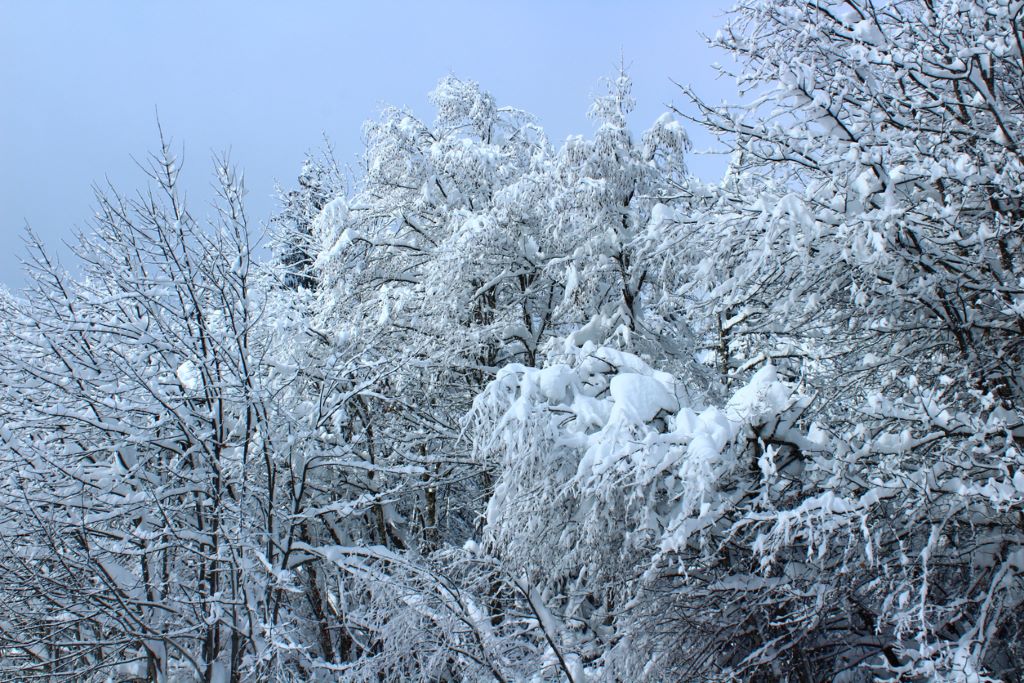
Last winter, my area had several snowstorms that caused arborvitae stems to flop in every direction. While it looked terrible, most trees adjusted themselves to look normal again.
Regarding snow and ice, it’s hard to protect mature trees, but we can help young trees and shrubs. Before a snowstorm, you can tie up certain trees, like arborvitae, to keep the stems upright through the worst weather. Another option is gently brushing the snow off the tree after the storm. If your trees become floppy, they will likely correct themselves in the coming weeks or months. Extra support may be needed if they don’t return to normal by spring. If that’s the case, remove the straps after one or two seasons to prevent stem girdling.
Ice is a different story. If your trees or shrubs have ice on them, don’t remove the ice, as this may cause more damage. Simply let the ice melt on its own.
Frost Heaving
As the ground freezes and thaws in winter, the soil expands, which can lead to frost heaving. When this happens, the plant roots are pushed up from the soil, exposing them to extreme cold.
- You can prevent frost heaving by adding four to six inches of mulch around the plants.
Root Injury
Roots are sensitive to cold. Most root damage occurs on newer plantings, especially if the roots dry out.
- As fall progresses, keep watering plants until the ground freezes.
- Look for cracks in the soil where cold air can enter and kill the roots. When planting, it’s a good practice to lightly compact the soil around the roots.
Animal Damage
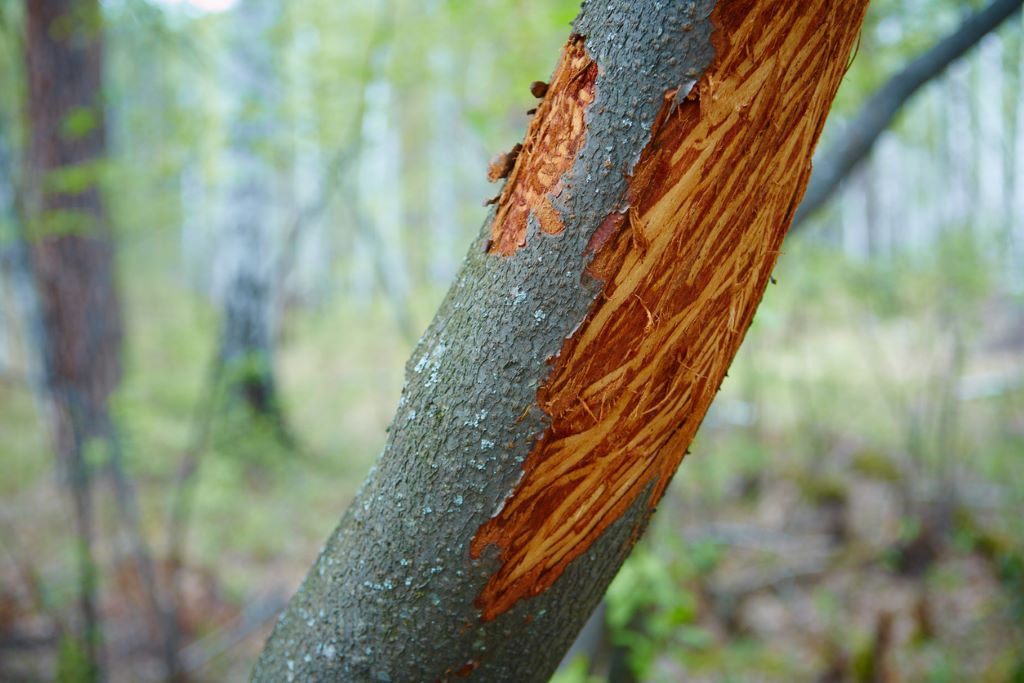
I’ll never forget the first time I saw rabbit damage in the garden. But here’s the strange thing: They were eating branches several feet off the ground. Thanks to our never-ending snowstorms, the rabbits had climbed on a snow pile and could access branches far above them.
- If you have rabbits, a fence is the best form of protection. And for snowy climates, that fence should be 18-24 inches above the snowline.
- When you’re adding the fence, you’ll want the bottom to be two to three inches under the soil.
Deer protection is similar but with a much taller fence (at least 8 feet tall). If the deer are ambitious, they can even jump a 12-foot fence, but that’s less common.
- Another issue can be deer rubbing their antlers on tree trunks in the fall. They usually prefer small trees with a trunk under 3 feet in diameter, so consider a plastic trunk guard to keep them away.
- Repellents can also be effective for trees and shrubs but must be applied regularly, especially after rain.

Ready or not, winter is coming. Make sure your plants are ready, too.
Other Recommended Reading
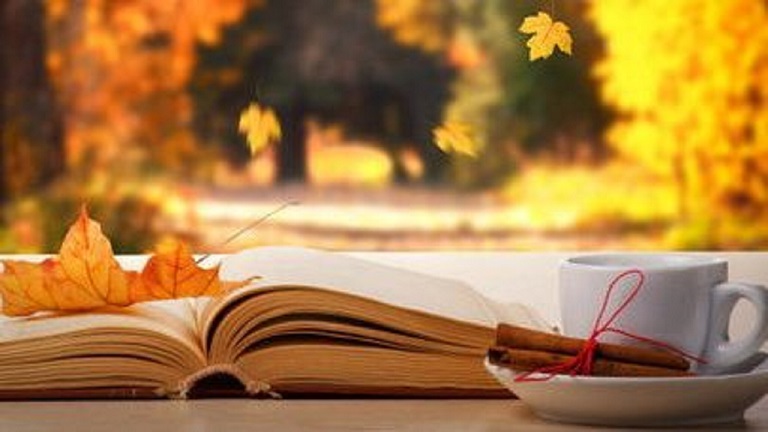
- Add Dimension To Your Garden With Summer-Blooming Bulbs
- An Easy Guide To Forcing Bulbs
- 6 Tips For Storing Bulbs During Winter
- Fall Bulb Planting Tips

At Jung Seed Co, we strive to be your go-to guide for all your gardening needs. Our YouTube channel, The Garden Doctor by Dick Zondag, is where he provides gardening tips for all levels of gardeners. When you need reliable gardening advice, turn to the trusted experts at Jung.
View our new catalog online or browse our website for your gardening favorites. Sign up for our weekly email to receive info on new products, exclusive deals, and specials. Join our Facebook page to discuss all things gardening!
About the Author: Matthew Olson is a professional horticulturist and garden writer. He has a bachelor’s degree in horticulture from UW-River Falls and is a certified professional with the Minnesota Nursery and Landscape Association. His enthusiasm for plants and the outdoors brought him to the green industry. He regularly writes articles about gardening for both gardeners and industry professionals. He can be reached at matt@mattolsonhorticulture.com.